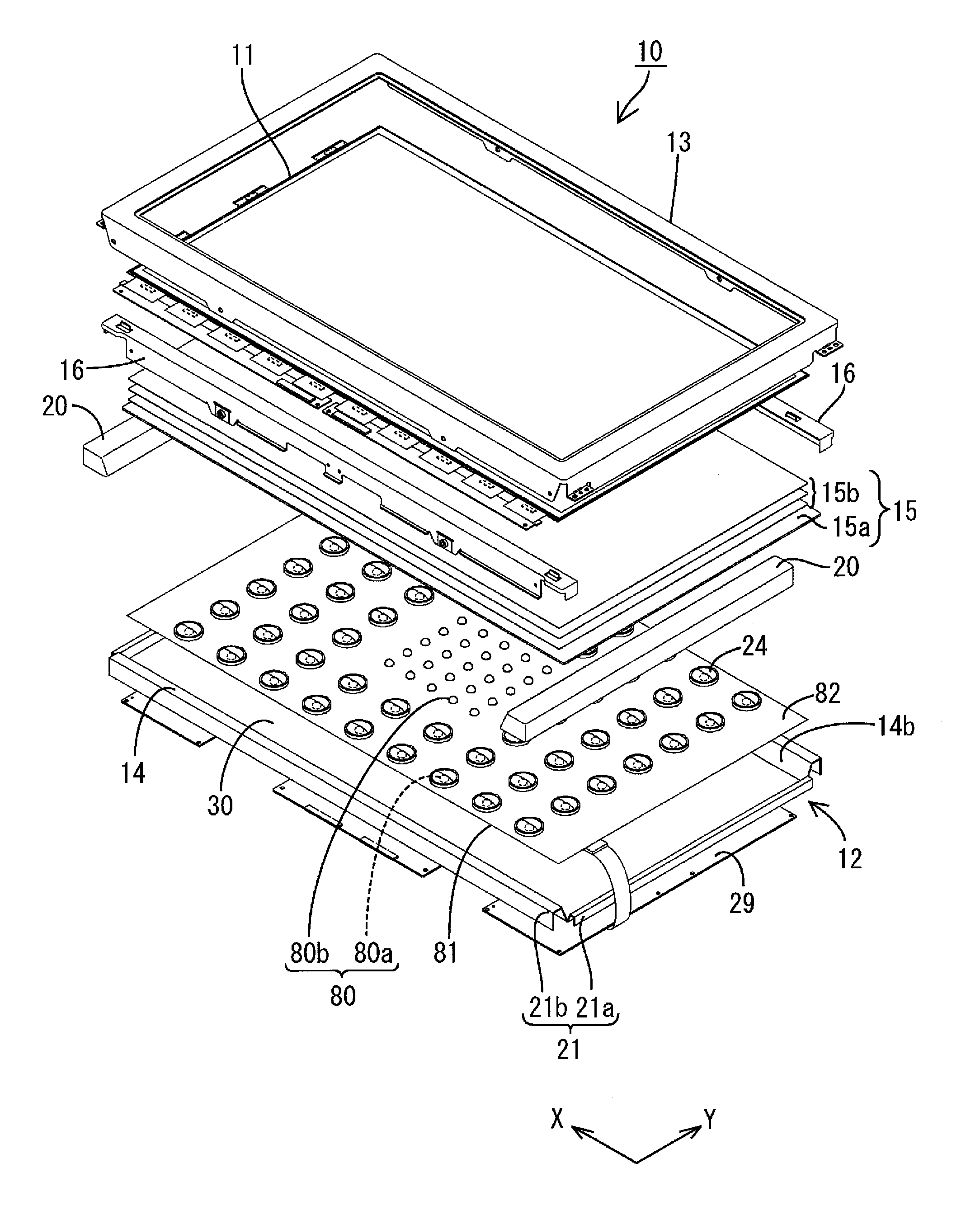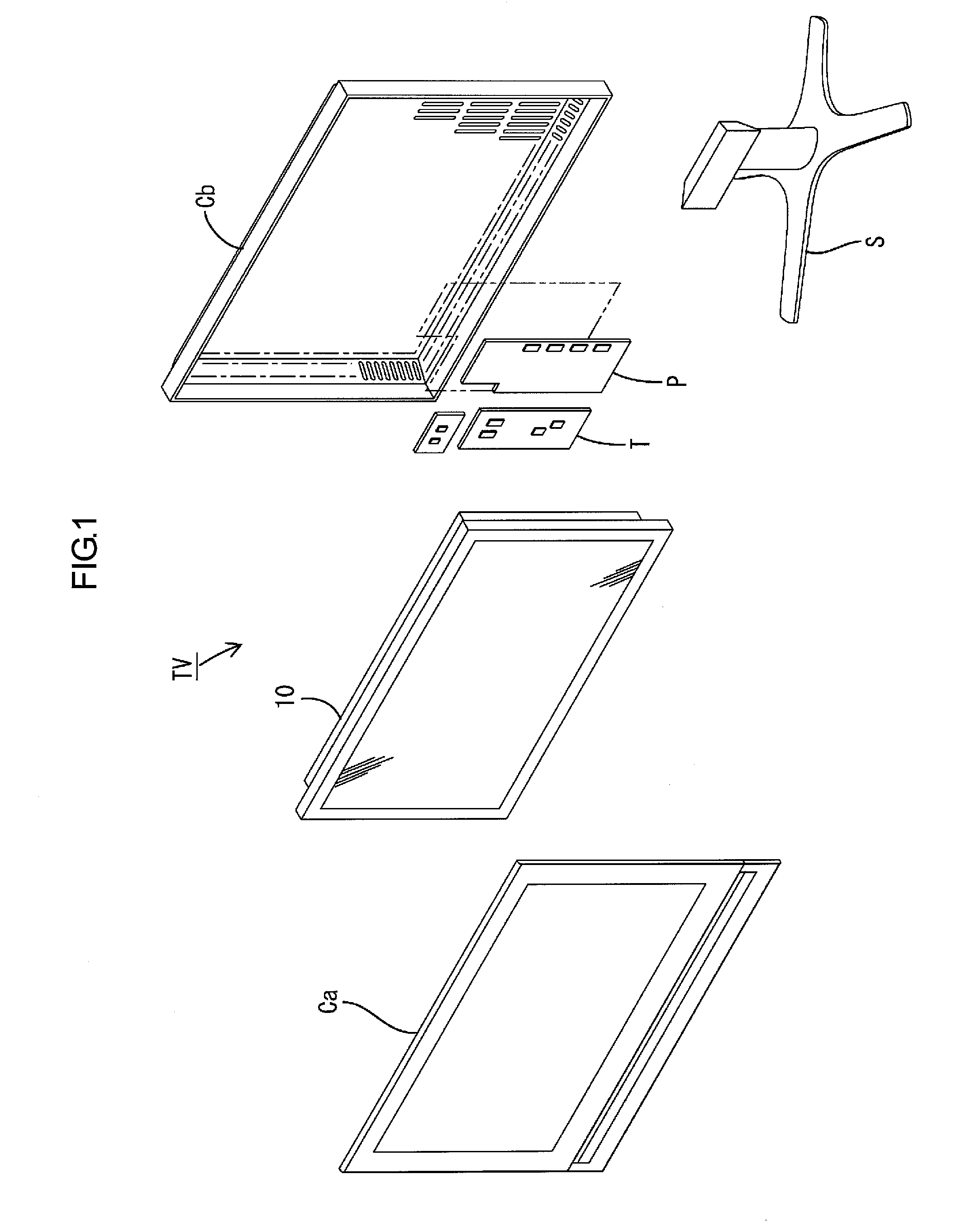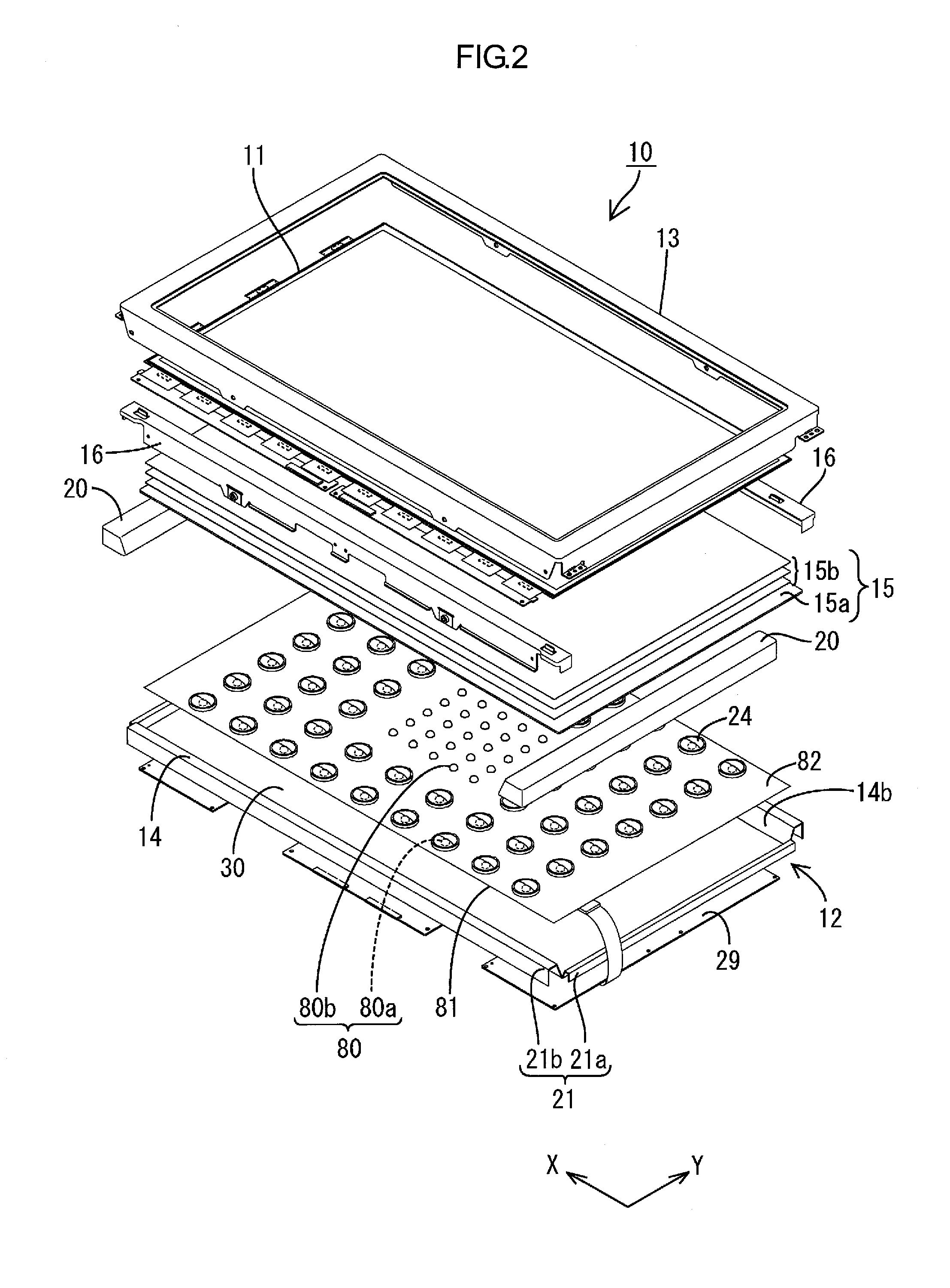Lighting device, display device and television receiver
- Summary
- Abstract
- Description
- Claims
- Application Information
AI Technical Summary
Benefits of technology
Problems solved by technology
Method used
Image
Examples
first embodiment
Modification of First Embodiment
[0058]As described above, the first embodiment of the present invention has been illustrated. However, the present invention is not limited to the above embodiment. A modification of a distribution mode of the light reflection portions 50 illustrated in FIG. 7 may be employed, for example. In this modification, the same constituent parts and constituent elements as those of the first embodiment are indicated by the same symbols, and will not be described.
[0059]The diffuser 15a in the present modification includes at least the light reflection portions 50 provided in positions facing the LED light sources 80 in not only the position overlapping with the light source low-density area LL but also the position overlapping with the light source high-density area LH as illustrated in FIG. 7. In this case, in the light reflection portions 50, the area of the dot in the position overlapping with the light source high-density area LH is smaller than the area i...
second embodiment
[0061]Next, a second embodiment of the present invention will be described with reference to FIGS. 9 to 11.
[0062]In a liquid crystal display device 10 included in a television receiver TV of the second embodiment, the diffuser lenses 24 are omitted from the backlight unit 12 of the first embodiment, and the others are the same as those of the first embodiment. The same constituent parts as those of the above first embodiment are indicated by the same symbols without repeating overlapping descriptions.
[0063]The backlight unit 12 employed for the second embodiment has the LED light sources 80 provided on the LED board 81. The LED light sources 80 are arranged on the LED board 81 such that the light source high-density area LH where the arrangement interval of the LED light sources 80 is relatively small is formed in the center area (that is, the center area of the chassis 14) of the LED board 81, and the light source low-density area LL where the arrangement interval of the LED light ...
PUM
 Login to View More
Login to View More Abstract
Description
Claims
Application Information
 Login to View More
Login to View More - R&D
- Intellectual Property
- Life Sciences
- Materials
- Tech Scout
- Unparalleled Data Quality
- Higher Quality Content
- 60% Fewer Hallucinations
Browse by: Latest US Patents, China's latest patents, Technical Efficacy Thesaurus, Application Domain, Technology Topic, Popular Technical Reports.
© 2025 PatSnap. All rights reserved.Legal|Privacy policy|Modern Slavery Act Transparency Statement|Sitemap|About US| Contact US: help@patsnap.com



